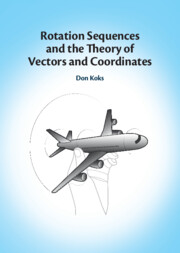Refine search
Actions for selected content:
3 results
9 - Rigid Bodies
-
- Book:
- Classical Mechanics
- Published online:
- 26 June 2025
- Print publication:
- 19 June 2025, pp 229-273
-
- Chapter
- Export citation
14 - Rigid-Body Dynamics
-
- Book:
- Rotation Sequences and the Theory of Vectors and Coordinates
- Published online:
- 17 April 2025
- Print publication:
- 24 April 2025, pp 447-487
-
- Chapter
- Export citation

Rotation Sequences and the Theory of Vectors and Coordinates
-
- Published online:
- 17 April 2025
- Print publication:
- 24 April 2025
